THE STATE OF CHILDREN’S ORAL HEALTH IN OHIO
The Ohio Department of Health recently released the results of its “Oral Health Screening Survey of Third Grade Schoolchildren in Ohio, 2023-2024.” The results of the screening survey were similar to the most recent previous survey from 2017-18.
For example, the 2023-24 survey showed that 51% of the screened children have a history of tooth decay, which was up slightly from the 48% observed with a history of decay in 2017-18. Similarly, in 2023-24, 19% of school children had “untreated tooth decay,” which is down slightly from 20% in 2017-18.
In 2023-24, 80% of Ohio school children had a dental visit within the past year, which is slightly below the 84% of Ohio children who had a dental visit in the previous year in the 2017-18 survey. Forty-two percent of the third graders screened in 2023-24 had one or more sealants on a permanent molar, compared to 48% in 2017-18.
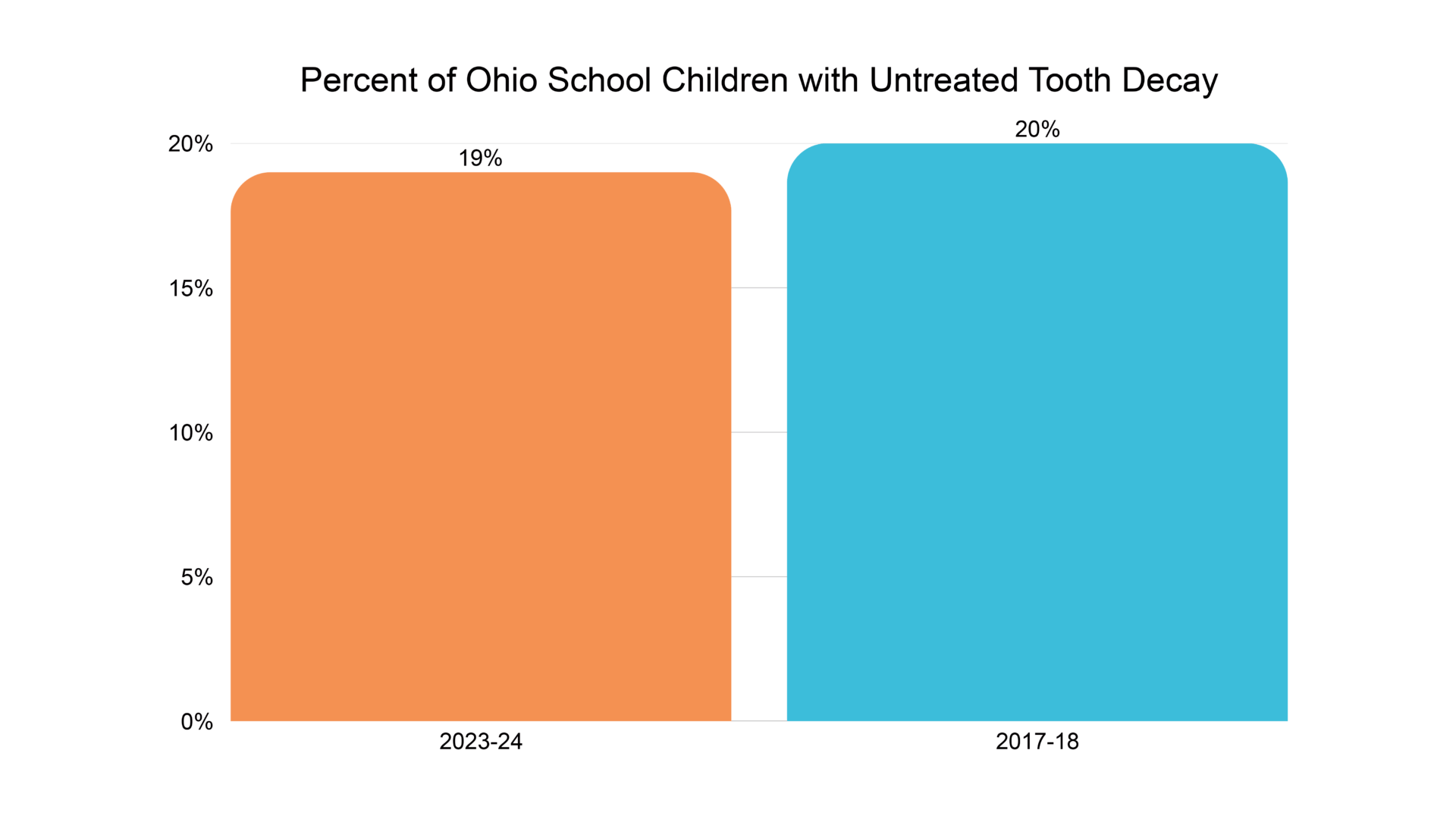
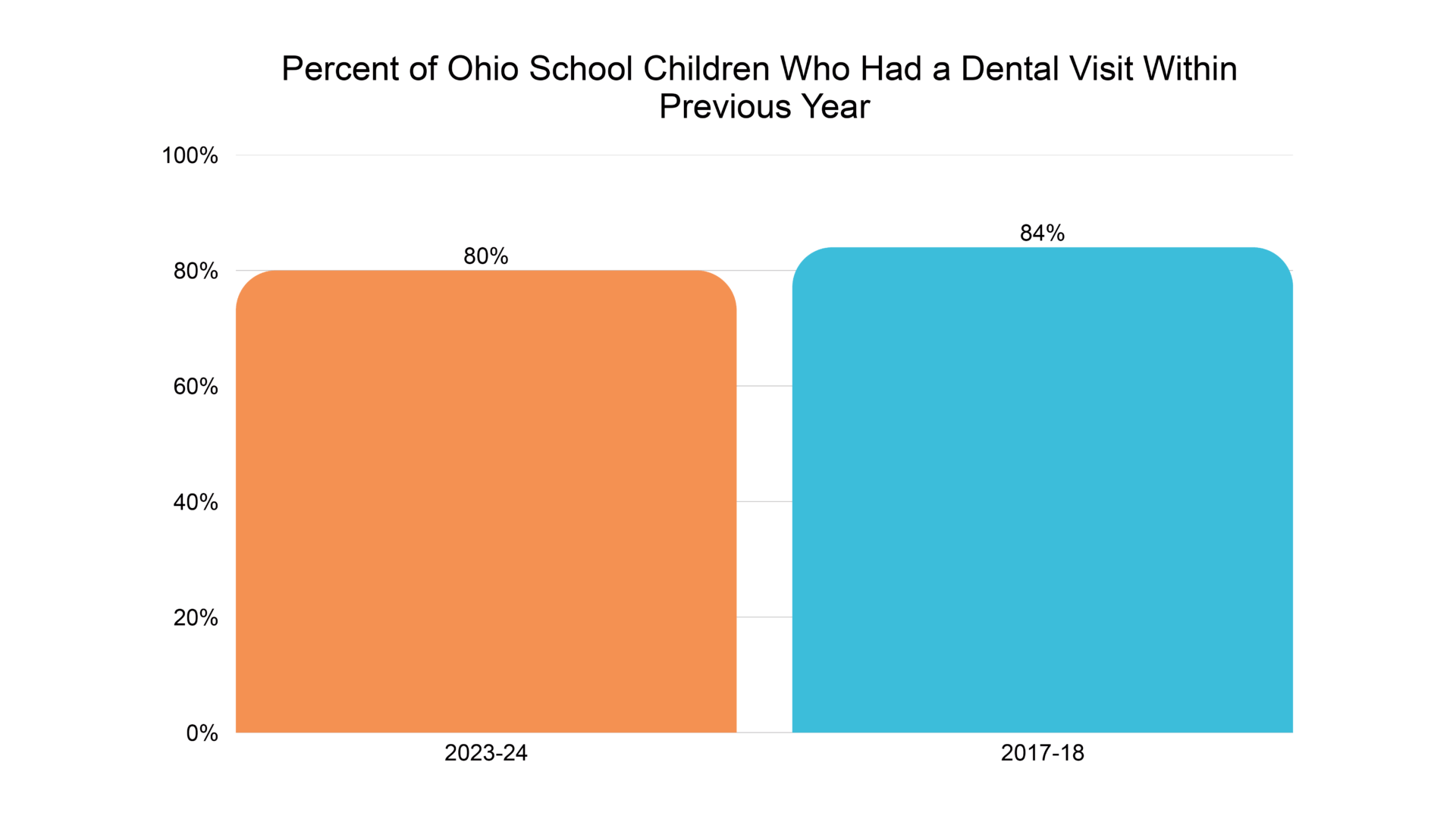 How Does Ohio Compare Nationally?
How Does Ohio Compare Nationally?
According to the Ohio Department of Health, the results for Ohio are similar to national averages. For example, 42% of Ohio school children have had at least one sealant, which is consistent with national data which shows 42% of all U.S. school children have had at least one dental sealant. Moreover, national data reveals that 51% of American school children have experienced dental decay, which is the exact same percentage for Ohio school children. However, the Ohio Department of Health identified one area where Ohio lagged the national average in that “Ohio has a slightly higher prevalence of untreated decay than the U.S. (19% vs. 15%).”
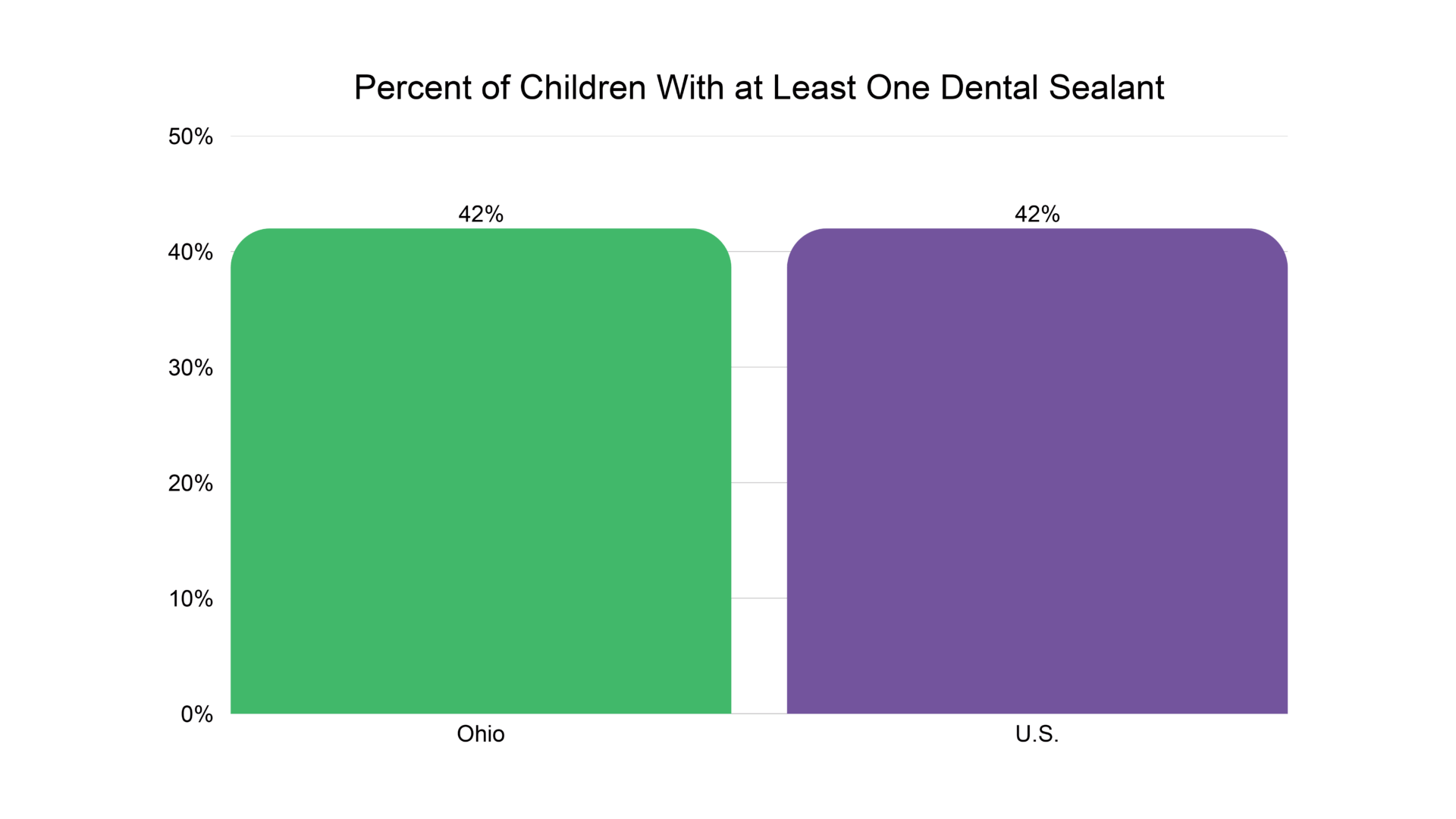
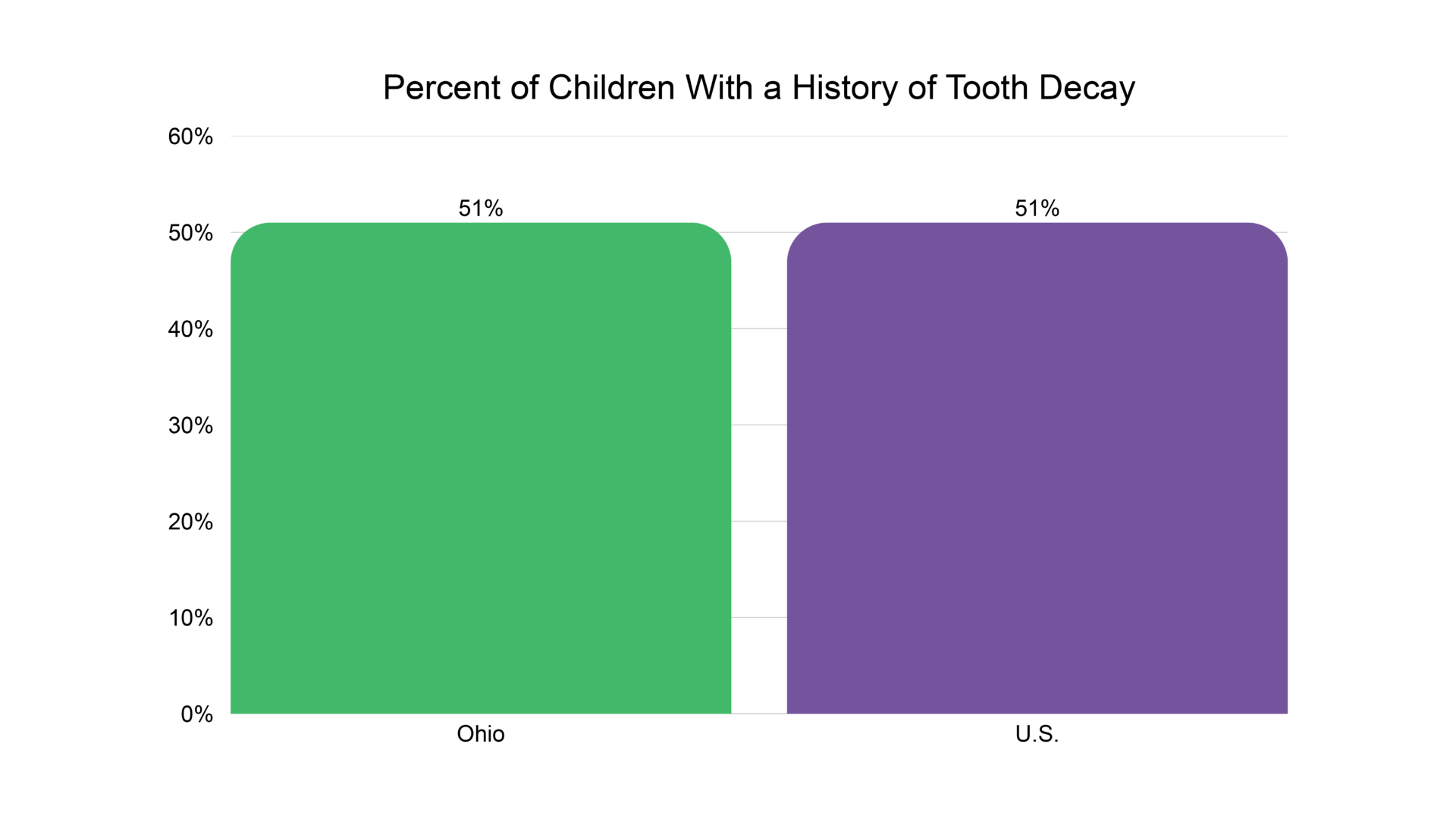 Areas of Concern – Disparities Based on Race, Ethnicity, Insurance Coverage and Income
Areas of Concern – Disparities Based on Race, Ethnicity, Insurance Coverage and Income
The Ohio Department of Health has done the third grade oral health screening survey every few years for decades, and the one area that has consistently caused concern is the persistence of oral health disparities between certain races/nationalities and between those served by Medicaid vs. private insurance. For example, only 17% of white Ohio school children had untreated dental decay in 2023-24 whereas that number was 22% for black school children and 32% for Hispanic school children. Similarly, 83% of white school children in Ohio had a dental visit within the past year as compared to 64% for black school children and 70% for Hispanic school children.
The gap is even bigger between children with private dental insurance (89% had a dental visit in the past year) and those who have Medicaid dental coverage (66% had a dental visit within the past year)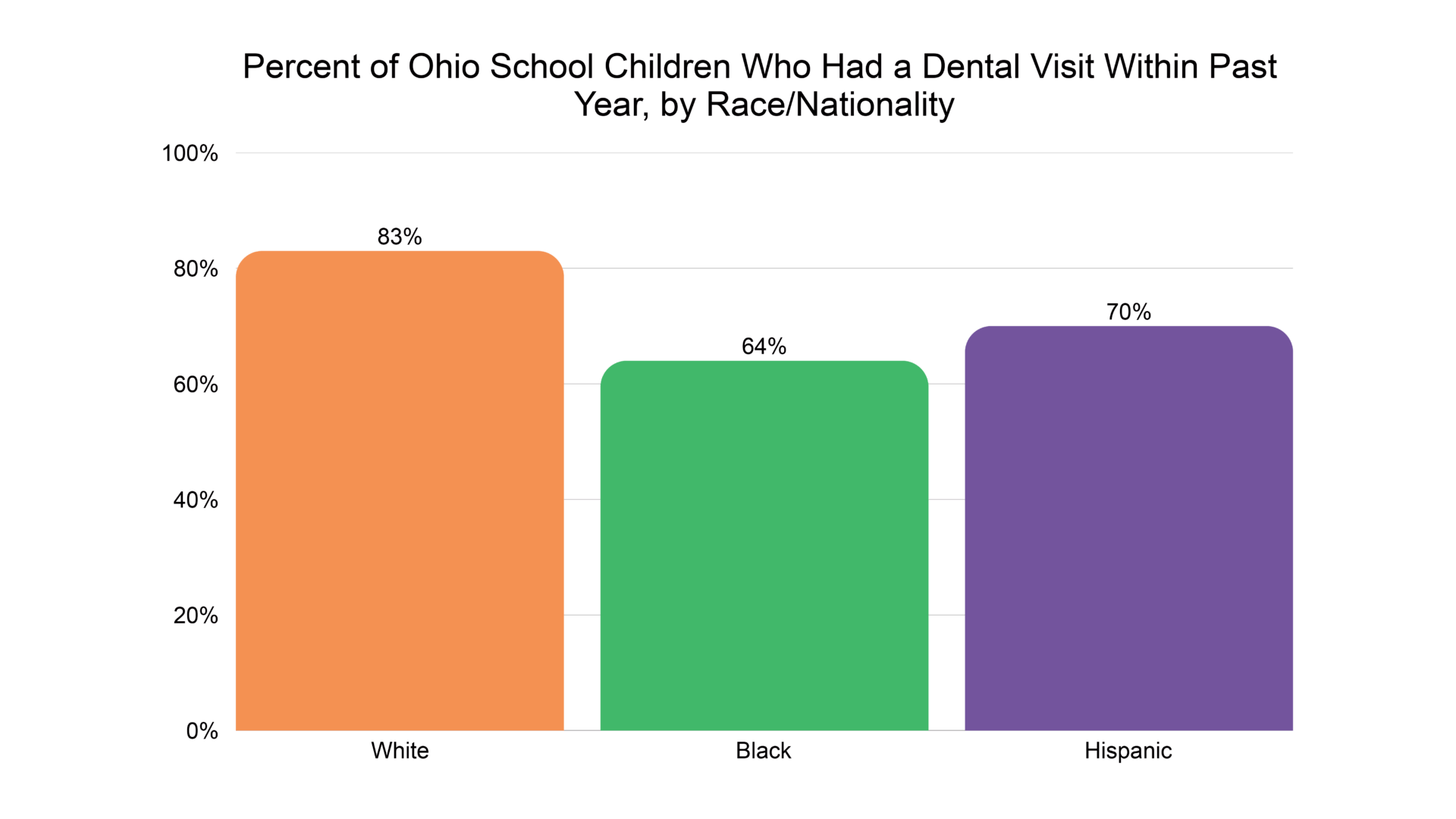
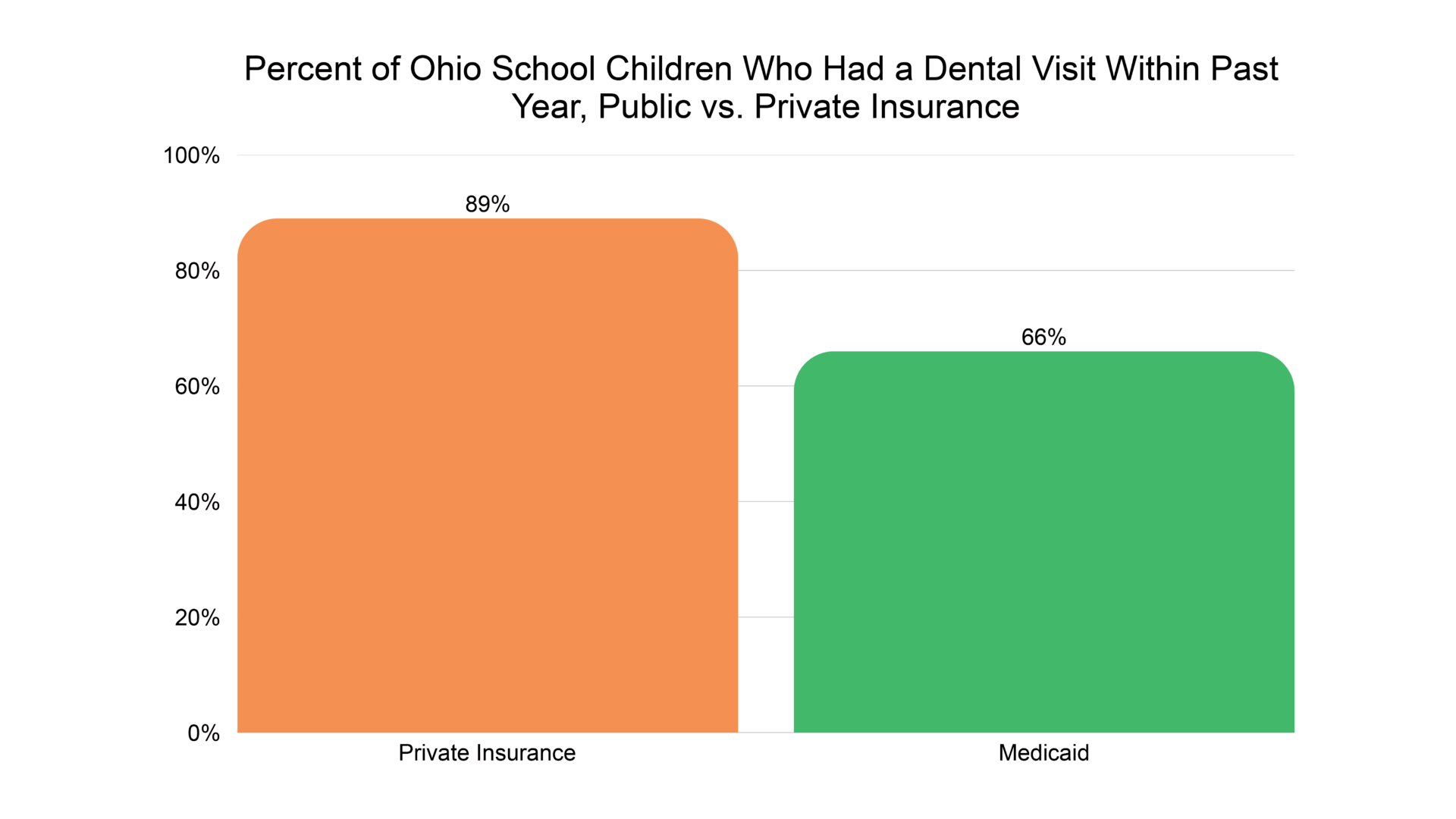 What will the future look like?
What will the future look like?
The most recent oral health screening survey of third grade school children in Ohio began in 2023. As a result of years of advocacy efforts led by the ODA, funding for dental Medicaid was significantly increased beginning in 2024. The new Medicaid reimbursements increased on average by 93% per procedure. Many dentists are reporting that these new reimbursements rival those of private insurance. We are just now seeing the impact of these significant Medicaid reimbursement increases.
Earlier this spring, the ODA conducted a survey of all its members – regardless of whether they are Medicaid providers or not. The results show that the reimbursement increases are significantly impacting the dental Medicaid system in Ohio. For example, 31% of respondents reported that they are now actively treating Medicaid-covered patients. This is an increase over the results of a broad membership survey that was taken in 2023 where 18% of ODA members reported treating Medicaid-covered patients.
Moreover, the recent ODA survey of its members reveals that:
- Eight percent of dentists who are currently treating Medicaid-covered patients report that they were not Medicaid providers prior to the reimbursement increases.
- Thirty-two percent of existing Medicaid dentists report that they are treating more Medicaid covered patients due to the reimbursement increases. On average they are treating 55 new Medicaid patients in a typical month.
- Eleven percent of practice owners that are currently treating Medicaid-covered patients report that the Medicaid reimbursement increases allowed them to hire an associate.
- Twenty-two percent of Medicaid practices report that the Medicaid reimbursement increases allowed them to add equipment or space to expand treatment capacity.
While this data is encouraging, there are other issues that could counter this positive momentum in expanding access to dental care and hopefully improving oral health in Ohio. For example, there are multiple proposals both nationally and here in Ohio that would impact patients’ exposure to fluoride. For example, one proposal would ban community water fluoridation in Ohio. Currently, more than 92% of Ohioans are served by fluoridated water systems. A statewide ban on community water fluoridation would have a significant negative impact on Ohioans’ oral health, especially those who don’t otherwise have access to prevention and other dental services. The ODA and its advocacy team continue to educate Ohio policymakers on the importance, effectiveness and safety of Ohio’s community water fluoridation program.
It is also unclear how funding cuts at the federal level could impact on access to dental care programs here in Ohio.
It will be very interesting to see if we have made progress in advancing the oral health of Ohio school children when the Ohio Department of Health conducts its next oral health screening survey of third grade schoolchildren in a few years.
